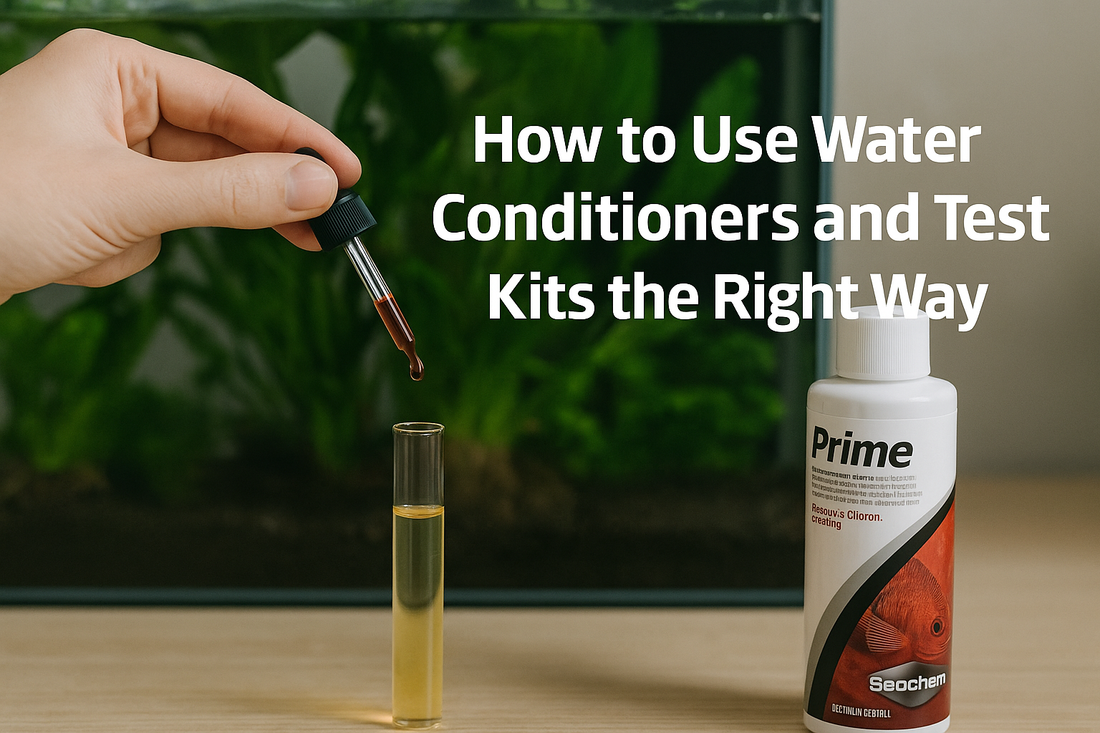Water quality is one of the most important—and often misunderstood—parts of freshwater aquarium care. While filters do the heavy lifting, water conditioners and test kits help you create a safe, stable environment for your fish. Whether you’re topping off your tank or doing a full water change, understanding how to use these tools correctly will prevent stress, illness, and dangerous chemical spikes.
What Do Water Conditioners Actually Do?
Water conditioners are liquid solutions that make tap water safe for aquarium use. They neutralize harmful chemicals such as chlorine, chloramine, and heavy metals—substances commonly found in municipal water. Many conditioners also include slime coat enhancers or aloe vera to protect fish during times of stress or transport.
Use a water conditioner every time you add tap water, whether you’re topping up evaporation or performing a large water change. Don’t wait to add the conditioner after pouring in new water—always treat it first or dose directly into the tank immediately as it fills.
How to Use Aquarium Test Kits
1. Choose the Right Kit
Liquid test kits (like API Master Test Kits) tend to be more accurate than strips. Essential parameters to test include:
- Ammonia (should be 0 ppm)
- Nitrite (should be 0 ppm)
- Nitrate (under 40 ppm is ideal)
- pH (depends on fish species—most prefer 6.5 to 7.5)
- KH (carbonate hardness) and GH (general hardness) for more advanced setups
2. Follow Instructions Carefully
Use clean test tubes and add the correct number of drops in order. Shake well, wait the specified time, and compare the colour against the chart in bright light. Always record your results for tracking trends.
3. Test Regularly
During new tank cycling, test daily. Once the tank is established, test weekly—or more often if you're troubleshooting illness or algae. Store kits in a cool, dry place to preserve accuracy.
When to Test and Treat Water
Always treat tap water with conditioner before adding it to your tank. Use a test kit after a water change to confirm conditions are stable. You should also test before adding new fish, after a death or illness, or any time your fish are showing signs of stress like gasping, clamped fins, or hiding.
Pro tip: Test your source water to understand your baseline pH and hardness before making adjustments.
Common Mistakes to Avoid
- Adding water conditioner too late, allowing chlorine to damage fish or bacteria
- Shaking test bottles incorrectly or skipping wait times
- Using expired test kits or misreading colour charts under poor lighting
- Neglecting to test ammonia and nitrite in new tanks or after filter cleanings
Get the Right Tools at Charterhouse Aquatics
We carry trusted test kits, conditioners, and water treatment solutions to support accurate monitoring and fast correction. Explore essentials like Seachem Prime, API Master Kits, JBL test sets, and tap water detoxifiers in our Freshwater Maintenance Collection.
Master these two simple tools, and you’ll be on your way to stress-free, crystal-clear aquatics.


